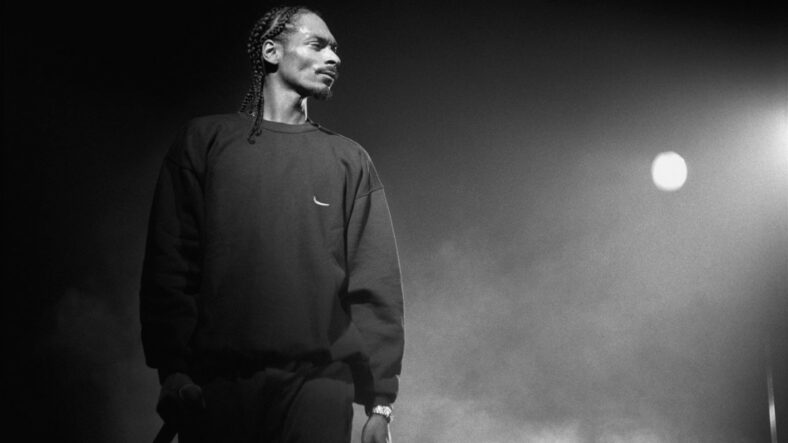Why Do Rappers Hold Four Fingers Up? (The Real Reasons)
Rappers holding up four fingers has multiple meanings in hip-hop culture. It can symbolize “West Side” to pay tribute to west coast wrappers 2Pac, Snoop Dogg, and Dr.Dre, while it’s also used as a gang sign or a warning that someone is in danger.
The origin and significance of the four-finger hand gesture in rap culture can be traced back to the early days of hip-hop. It more recently has gone viral on social media such as Tiktok with many people using this gesture without understanding its meaning.
Rappers adopted the symbol to convey a sense of unity and belonging within the community. It became a representation of the struggles, stories, and triumphs shared by those who come from similar backgrounds.
Over time, this gesture has persisted and evolved in contemporary hip-hop, where rappers use it to convey different meanings.
Contents
Origin and Significance in Rap Culture
The origin of the four-finger gesture in rap culture can be traced back to West Coast artists, who used it as a way to express pride and loyalty to their region. Known as the “Westside” sign or West Coast hand signal, this symbol became synonymous with West Coast hip-hop, embracing the identity and values of the artists from that area.
Pioneering rappers such as Tupac Shakur, Eazy E, Snoop Dogg, and Ice Cube were among those who popularized the Westside sign. They used this gesture to represent their allegiance to the West Coast and to embrace their roots. The four-finger symbol became a way for artists to show their devotion to their community and express the unique experiences and qualities that defined West Coast rap.
In the context of the rap scene, the Westside sign stands for more than just geographic loyalty. It also carries messages of resilience, solidarity, and regional pride, encompassing the experiences of the artists who helped shape the culture. This hand signal thus remains an enduring symbol of the West Coast hip-hop scene and its influence on the genre as a whole.
Four Fingers in Contemporary Hip-Hop
As contemporary hip-hop continues to evolve, the four-finger gesture maintains its presence and significance in the culture. More recent artists have adopted and adapted the symbol, paying tribute to its originators while also using it as a way to express their identity and connections within the rap community.
Notable artists like The Game, among others, have continued to use the four-finger gesture in their music videos and live performances. This demonstrates the enduring relevance of the symbol and its connection to the early days of hip-hop. By incorporating the gesture into their work, newer artists acknowledge their roots and pay homage to the pioneering figures who helped lay the foundation for the genre’s distinctive ethos and style.
In essence, the four-finger gesture remains an integral part of hip-hop culture, serving as both a visual and symbolic link between generations of rap artists. Its current usage pays respect to the history and spirit of the genre, connecting fans and artists alike to the rich legacy of hip-hop and the shared experiences that continue to define it.
Other Meanings Behind the Four-Finger Symbol
The four-finger hand sign, while deeply rooted in rap culture, has also found relevance and meaning in various other contexts. Its usage extends beyond the music industry, and its significance varies depending on the situation, representing unity, support, or awareness in different scenarios.
Another meaning behind this hand signal is known as the “silent signal”. This signal is used to represent or convey that someone is in danger in scenarios like domestic violence. This is done by tucking the thumb into your palm, holding four fingers forward, and closing them onto a fist.
It’s also important to note that according to Urban Dictionary, “4s Up” is a “gang” symbol or gang sign from Florida that represents the “hood” of people in North Lauderdale, Pompano Beach, Oakland Park, or Broward County.
The Role of Social Media in Spreading the Gesture
Social media platforms, particularly TikTok, have played a significant role in spreading the four-finger gesture to a wider audience. These platforms enable trends, memes, and other forms of content to go viral quickly, often leading to reinterpretation or appropriation of the symbol without a full understanding of its original meaning.
On TikTok, users may incorporate the four-finger gesture in their videos, sometimes with no clear connection to its rap culture origins. As these videos gain traction, other users may adopt the symbol without being aware of its historical and cultural significance. The widespread nature of social media trends can sometimes dilute the original meaning of a gesture, leading to misunderstandings or misrepresentations.
Despite the potential for misunderstandings on social media, the four-finger gesture’s continued prevalence serves to highlight its enduring nature and impact. While social media platforms like TikTok can spread symbols and trends rapidly, users must educate themselves on the true meaning and cultural background of gestures like the four-finger symbol, ensuring that they are used respectfully and meaningfully.
Conclusion
In conclusion, holding up four fingers is a big symbol of rap culture, originating from West Coast artists as a way to express pride and loyalty to their region. With its enduring presence in contemporary hip-hop, the symbol also demonstrates the powerful connection between generations of rap artists.
While the gesture has found relevance in various other contexts, such as sports, awareness of mental health issues, and political demonstrations, it is important to remember its roots in the rap community.
The rise of social media platforms like TikTok has further popularized the symbol, though it’s essential to remain conscious of its original meaning to avoid misunderstandings. The four-finger gesture ultimately serves as a testament to the strength of symbols in conveying complex ideas and fostering connections across diverse environments.
Snoop Dog Featured Image by: Mika Väisänen, CC BY 3.0, via Wikimedia Commons






